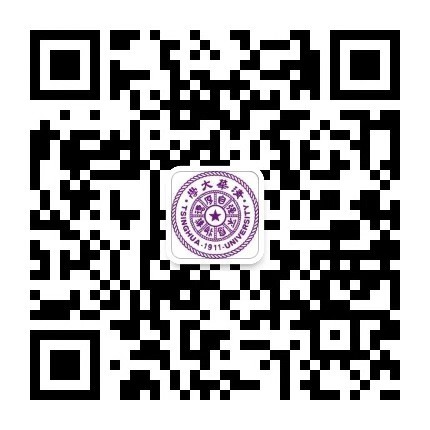刘颖,1998年毕业于中国科学院计算技术研究所,获博士学位。现任清华大学人文学院中文系长聘教授,博士生导师。2006年2月至2007年1月在美国卡耐基梅隆大学计算机学院语言技术研究所作访问学者。
主要研究领域为计算语言学和语料库语言学。共出版著作6部。在SCI、SSCI、ACL、EMNLP、COLING等国内外学术期刊和国际会议上发表论文100多篇。先后主持“基于计算风格学的明清小说研究”、“数字人文视野下的语言文学研究”、“语体特征的自动提取和研究”、“莫言与余华小说的计量风格分析与比较”、 “机器翻译多策略研究”和“基于深度学习框架的开源教程和案例建设”等多个国家级、省部级科研项目。
著作:
[1] 刘颖,《计算语言学》第二版,清华大学出版社,2014年。
[2] 刘颖,《统计语言学》,清华大学出版社,2014年。
[3] 刘颖,《计算语言学》第一版,清华大学出版社,2002年。
[4] 胡海涛,刘颖,《离散数学》,华北电力大学出版社,2010年。
[5] 刘颖,胡海涛译,《语料库语言学》,清华大学出版社,2012年10月。
[6] 刘颖,姜文涛,陆晓芳主编, 《数字人文语语言文学研究》,译林出版社,2022年9月30日。
代表性论文:
Ying Liu, TianJiu Xiao. A Stylistic Analysis for Gu Long’s Kung Fu Novels. Journal of Quantitative Linguistics, Volume 27, 2020 - Issue 1,32-61.
Ying Liu,NanWang, Bo Yuan. A Quantitative Analysis and Sentence Alignment for Parallel Corpora of ShiJi. Journal of Quantitative Linguistics. Volume 23, 2016 - Issue 1,71-108
Zheng J, Liu Y. What does Chinese BERT learn about syntactic knowledge? PeerJ Computer Science. 9:e1478. 1-22, 2023. http://doi.org/10.7717/peerj-cs.1478
Jianyu Zheng, Ying Liu. Probing Language Identity Encoded in Pre-trained Multilingual Models. PeerJ Computer Science. 8:e899, 1-23, 2022, http://doi.org/10.7717/peerj-cs.899
Hanyan Wu, Ying Liu et al. Key n-Gram Extractions and Analyses of Different Registers Based on Attention network. Journal of Applied Mathematics. Volume 2021, Article ID 5264090, 16 pages.
Zhu Liu, Cunliang Kong, Ying Liu, Maosong Sun. Fantastic Semantics and Where to Find Them: Investigating Which Layers of Generative LLMs Reflect Lexical Semantics . Findings of the 61st Annual Meeting of the Association for Computational Linguistics: ACL 2024
Liu Zhu, Liu Ying. Ambiguity Meets Uncertainty: Investigating Uncertainty Estimation for Word Sense Disambiguation. Findings of the 61st Annual Meeting of the Association for Computational Linguistics: ACL 2023, 3963-3977, 2023.
Shenglong Zhang, Ying Liu. Adversarial Multi-task Learning for End-to-end Metaphor Detection. Findings of the 61st Annual Meeting of the Association for Computational Linguistics : ACL 2023, 1483-1497, 2023.
Zhu S, Du B, Zhao J, Liu Y, Liu P. Do PLMs and annotators share the same gender bias? Definition, dataset, and framework of contextualized gender Bias[C]//In: Proceedings of the 5th Workshop on Gender Bias in Natural Language Processing (GeBNLP at ACL2024), 2024: 20-32.
Zhu Liu, Cunliang Kong, Ying Liu, Maosong Sun.A Top-down Graph-based ToolforModeling Classical Semantic Maps: A Case Study of Supplementary Adverbs. 2025 Annual Conference of the Nations of the Americas Chapter of the Association for Computational Linguistics(NAACL2025).
Li J, Zhu S, Liu Y, Liu P. Analysis of Gender Bias in Social Perception and Judgement Using Chinese Word Embeddings[C]//Proceedings of the 4th Workshop on Gender Bias in Natural Language Processing (GeBNLP at NAACL2022), 2022: 8-16.
Xuelin Liu, Yanfei Zhu, Shucheng Zhu, Pengyuan Liu, Ying Liu, Dong Yu. Evaluating Moral Beliefs across LLMs through a Pluralistic Framework. The 2024 Conference on Empirical Methods in Natural Language Processing, EMNLP2024.
Haiyan wu, Ying Liu. Modularized Syntactic Neural Networks for Sentence Classification ,The 2020 Conference on Empirical Methods in Natural Language Processing, EMNLP2020.Nov 16-20,2020
Zhu Liu, Zhen Hu, Ying Liu. JuniperLiu at CoMeDi Shared Task: Models as Annotators in Lexical Semantics Disagreements. Proceedings of Context and Meaning: Navigating Disagreements in NLP Annotation, 103–112, 2025.
Song L, Ying L. Approaches and Challenges for Resolving Different Representations of Fictional Characters for Chinese Novels[C]//Proceedings of the 2024 Joint International Conference on Computational Linguistics, Language Resources and Evaluation, 2024. (COLING2024)
Zhu S, Wang W, Liu Y. Quite Good, but Not Enough: Nationality Bias in Large Language Models - A Case Study of ChatGPT[C]//Proceedings of the 2024 Joint International Conference on Computational Linguistics, Language Resources and Evaluation, 2024. (COLING2024)
Zhang S, Liu Y. Metaphor Detection via Linguistics Enhanced Siamese Network[C]//Proceedings of International Conference on Computational Linguistics. 2022. (COLING2022)
Zhao Jishun, Zhu Shucheng, Liu Ying, Liu Pengyuan. CDAIL-BIAS MEASURER: A Model Ensemble Approach for Dialogue Social Bias Measurement[C]//Proceedings of Natural Language Processing and Chinese Computing: 11th CCF International Conference (NLPCC2022), 2022:204-215.
Zhu S, Liu Y. Offensiveness Analysis of Chinese Group Addressing Terms and Dataset Construction[C]//In: Dong M, Hong J, Lin J, Jin P (eds) Chinese Lexical Semantics (CLSW2023). Lecture Notes in Artificial Intelligence, vol 14515. Springer, Cham, 2023: 342-356.
Li J, Zhu S, Liu Y, Liu P. Gender Stereotypes in TCSOL Dialogue Corpus. Proceedings of 2022 International Conference on Asian Language Processing (IALP2022),2022:427-432.
Mitsuhiro Nishijima and Ying Liu. Native Language Identification and Reconstruction of Native Language Relationship Using Japanese Learner Corpus, The 35th Pacific Asia conference on Language, Information and Computation. 2021.
Fan Chulin,Liu Ying. A Stylistic Analysis on the Shijing. 7th Annual International Conference on Language, Literature & Linguistics, 25th - 26th June 2018.
张声龙, 刘颖, 马艳军,SaGE:基于句法感知图卷积神经网络和 ELECTRA 的中文隐喻识别模型. 中文信息学报, 2024, 38(03)。
宋丽, 刘颖,用计量风格学方法考察《水浒传》的作者争议问题. 中文信息学报, 2022,36(8):163-174。
范楚琳,刘颖,基于多维度分析法的鲁迅三种文体比较研究. 中文信息学报, 2020, 34(10): 94-104。
涂梦纯,刘颖,余华与莫言长篇小说的计量统计和分析,中文信息学报,2019,33 (2): 131-142。
刘颖,曹项,基于网络搜索的英汉人名翻译,中文信息学报,第 31 卷第 2 期,2017,49-54。
刘颖,曹项,基于熵模型的英汉人名对齐,中文信息学报,第30卷第3期,2016年5月,52-59。
肖天久,刘颖,基于聚类和分类的金庸与古龙小说风格分析, 中文信息学报, 2015,29(5):167-177。
刘颖,姜巍,改进的隐马尔克夫模型的词语对齐,中文信息学报,2014年,第28卷第2期,51-55。
贺湘情,刘颖,基于文本聚类的语言韵律和节奏风格特征挖掘,中文信息学报,2014年,第28卷第6期,194-200。
刘颖,肖天久,金庸与古龙小说计量风格学研究,清华大学学报哲社版,2014年,第29卷,135-147。
刘颖,肖天久,《红楼梦》计量风格学研究,红楼梦学刊,2014年第4辑,260-281。




